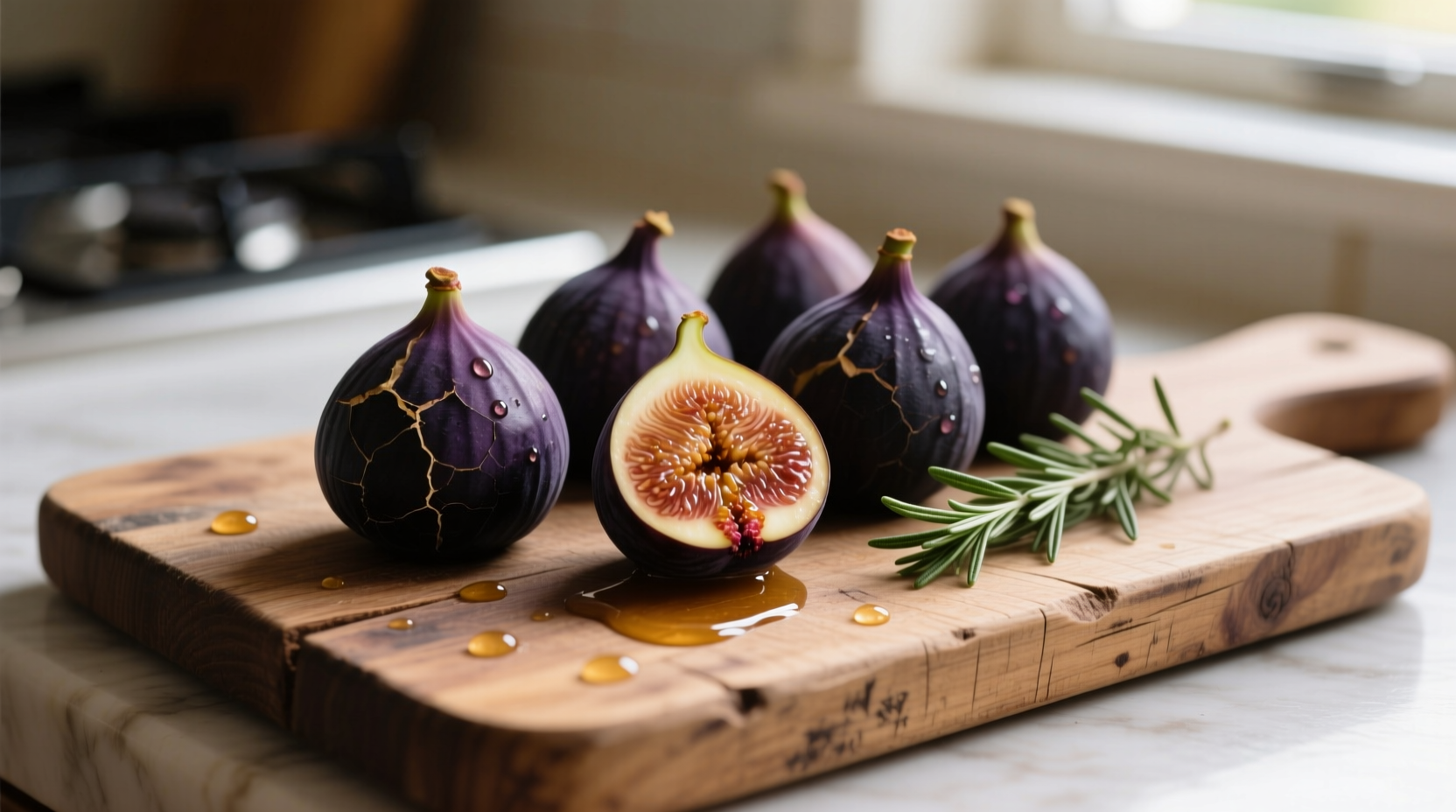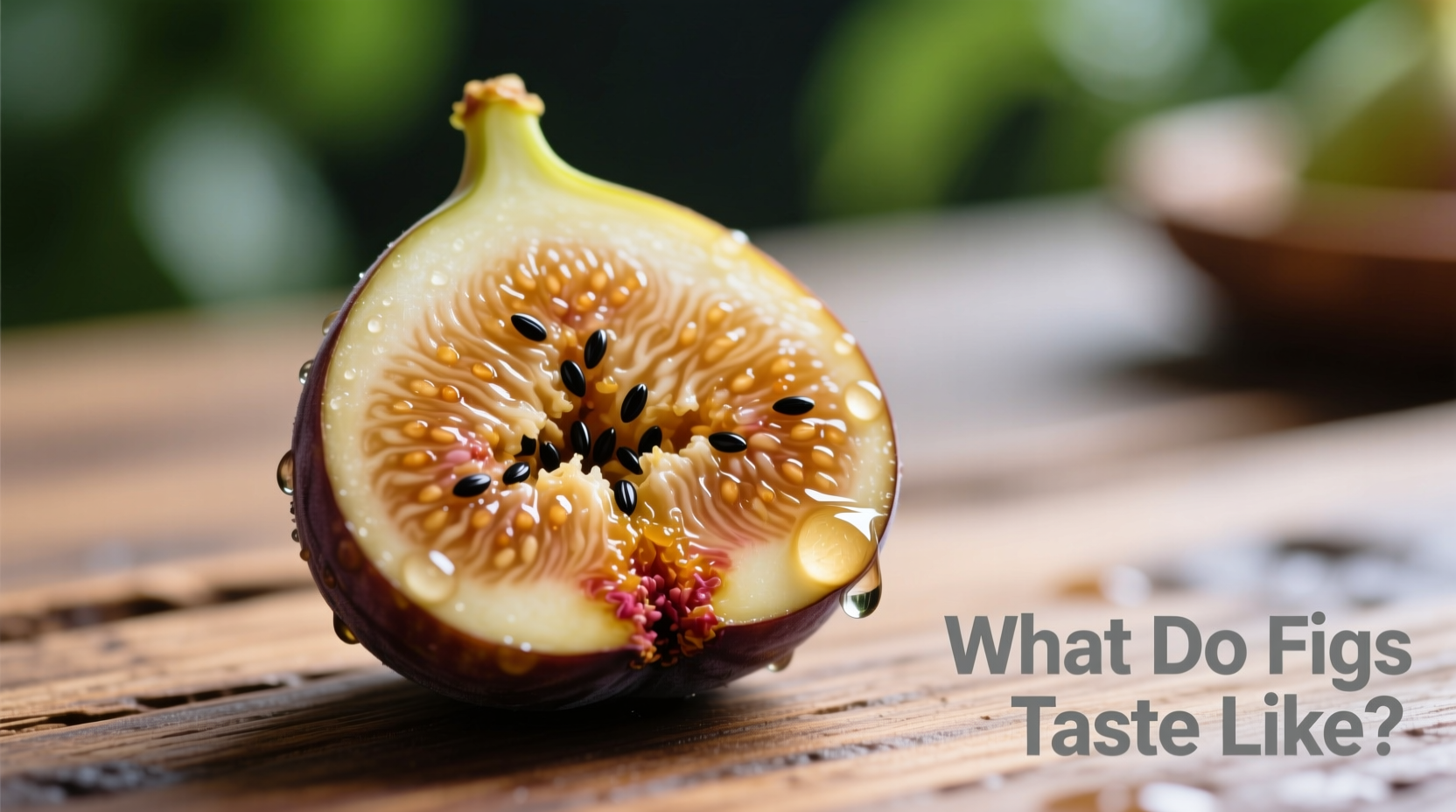Unlocking the Unique Flavor Profile of Figs
When you bite into a perfectly ripe fig, you experience one of nature's most sophisticated sweet treats. Unlike simple sugary fruits, figs deliver a layered flavor experience that evolves as you eat. The initial burst is intensely sweet—comparable to honey or caramel—but quickly develops complex notes of ripe berries, subtle floral hints, and a whisper of earthiness that prevents the sweetness from becoming cloying.
The Texture Experience: More Than Just Taste
Figs offer a remarkable textural contrast that enhances their flavor profile. The thin, edible skin provides slight resistance before giving way to the soft, jelly-like interior. Inside, hundreds of tiny seeds create a delicate crunch that releases additional flavor compounds as you chew. This combination of smooth flesh and subtle seed crunch makes figs uniquely satisfying to eat.
| Fig Variety | Sweetness Level | Distinct Flavor Notes | Best Culinary Use |
|---|---|---|---|
| Black Mission | ★★★★★ | Honey, berry, caramel | Raw eating, desserts |
| Kadota | ★★★☆☆ | Subtle honey, green apple | Cooking, preserves |
| Calimyrna | ★★★★☆ | Nutty, citrus blossom | Cheese pairings, baking |
| Brown Turkey | ★★★☆☆ | Berry, mild earthiness | Salads, fresh consumption |
How Ripeness Transforms Fig Flavor
The taste of figs changes dramatically as they ripen—a timeline worth understanding before you eat:
- Underripe (firm, green): Mildly sweet with grassy notes, slightly astringent skin
- Perfectly ripe (slightly soft, neck bends): Maximum sweetness with complex berry-honey notes, jelly-like texture
- Overripe (very soft, split skin): Intensely sweet with fermented notes, almost jam-like consistency
According to agricultural research from the University of California Cooperative Extension, peak ripeness delivers up to 30% more natural sugars than underripe figs, explaining the dramatic flavor difference.
Fresh vs. Dried: A World of Difference
While fresh figs offer a delicate, nuanced flavor, dried figs develop deeper, more concentrated notes. The drying process caramelizes natural sugars, creating richer molasses and toffee undertones. Dried figs also develop a chewy texture that contrasts with the soft juiciness of fresh figs. Interestingly, the USDA's Nutrient Data Laboratory confirms that drying concentrates certain flavor compounds while reducing others, resulting in a distinctly different sensory experience.
Perfect Pairings: Enhancing Fig Flavor
Chefs worldwide leverage figs' complex flavor profile through strategic pairings:
- Cheese companions: Creamy goat cheese balances figs' sweetness with tangy contrast
- Protein partners: Prosciutto's saltiness creates a sweet-savory harmony with figs
- Liquid enhancers: A drizzle of aged balsamic transforms fig flavor with complex acidity
Professional chefs note that figs' enzymatic properties actually tenderize meats when used in marinades—a practical benefit beyond their flavor contribution.
Common Fig Flavor Misconceptions
Many people misunderstand fig flavor due to improper ripeness or variety selection:
- "Figs taste bland"—usually describes underripe fruit; perfectly ripe figs are intensely flavorful
- "All figs taste the same"—varieties differ as much as strawberries versus raspberries
- "The crunch is unpleasant"—those are edible seeds that release additional flavor compounds

Seasonal Flavor Variations
Figs have two distinct seasons that affect their taste profile:
- Early season (June-July): Breba crop figs tend to be larger with milder flavor
- Main season (August-October): Primary crop figs deliver peak sweetness and complexity
Food scientists at the American Society for Horticultural Science have documented that main crop figs contain higher concentrations of volatile aromatic compounds, explaining their superior flavor.
How to Select the Sweetest Figs
Follow these practical guidelines for optimal fig flavor:
- Choose figs with slight neck bending indicating full ripeness
- Look for deep color specific to the variety (not uniform darkness)
- Avoid figs with sour or fermented smell (sign of overripeness)
- Gentle squeeze should yield slightly but not feel mushy
Remember that figs don't continue ripening after picking—they either maintain or degrade in quality. This explains why supermarket figs often disappoint compared to farmers' market specimens.
Preserving Fig Flavor at Home
To maintain optimal flavor after purchase:
- Store ripe figs in a single layer on a paper towel-lined container
- Refrigerate for no more than 2-3 days (cold slows but doesn't stop ripening)
- Never wash figs until immediately before eating (moisture accelerates spoilage)
- Freeze whole figs for longer storage (thaw slowly in refrigerator)
Research from the Journal of Food Science shows that improper storage can reduce fig flavor compounds by up to 40% within 48 hours.
Fig Flavor in Culinary Applications
Understanding fig flavor helps you use them effectively in recipes:
- Raw applications: Best with Black Mission figs at peak ripeness for maximum sweetness
- Cooking applications: Kadota figs hold shape better while maintaining flavor
- Desserts: Pair with complementary flavors like orange zest or vanilla
- Savory dishes: Balance with salty or acidic elements to highlight fig's sweetness











 浙公网安备
33010002000092号
浙公网安备
33010002000092号 浙B2-20120091-4
浙B2-20120091-4